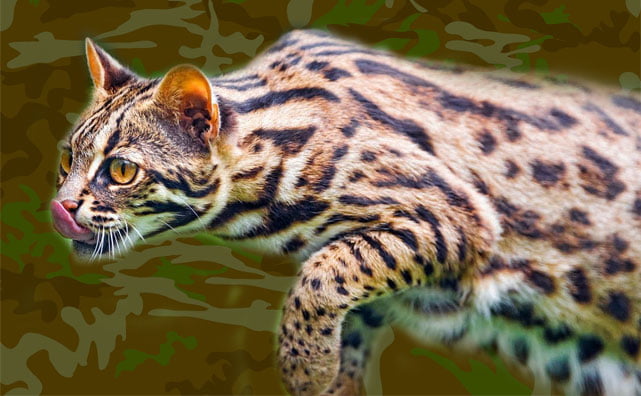Yes, Asian leopard cats like water. Other names for this small wild cat are “leopard cat” and “Asiatic leopard cat”. It is said that, “Though the leopard cat is much smaller and slighter than the fishing cat, both have similar coat patterns and a great affinity for water; thus the two species are sometimes confused.”
They are also said to be excellent swimmers “and completely at ease in water”. One Asian leopard cat was captured when it swam to a ship anchored in the Bay of Bengal. Another report states that in Sumatra, “one young cat was seen playing belly-deep at the edge of a small stream; it eventually swam confidently into the swift-flowing deep water and crossed to the other side.”

In captivity, leopard cat kittens spend a lot of time playing in water. In Borneo two young male Asian leopard cats kept as pets began playing in a small pond when they were only months old. The owner of the cats said, “they tried to catch water weeds or played with each other, falling over and getting thoroughly wet. Frequently they swam right across the pond.”
In the wild, they prefer the sort of dense forest cover which is associated with water because that is where most of the prey animals are and, as stated, they are at home in water.
The Asian leopard cat is also a very agile climber and quite arboreal in their habits, meaning that they love to be in trees. Indeed leopard cats in the East Berlin Zoo slept at the ends of tree branches rather than in nest boxes.
The leopard cat captures prey using a combination of their eyesight and their whiskers. Their whiskers are incredibly important to them when capturing prey as indicated by one captive leopard cat that was blind in one eye which was still able to capture mice on the blindside. Whiskers are also very important to domestic cats so please don’t trim or pull them!

Their behaviour when capturing typical prey animals such as fish, rats and amphibians, is to hold on to the struggling prey rather than dropping it and re-attacking the animal. This behaviour is typical of fishing cats and flat-headed cats, both of which hunt in and around water. This behaviour is thought to be typical of wild cat species that prey on fish and birds because if the bird or fish escape capture they are much harder to recapture.
The domestic Bengal cat has Asian leopard cat DNA in it and is said to like being in water. You can see why.
Note: the quotes are from Wild Cats of the World. The authors, Fiona and Mel Sunquist have, in turn, quoted from scientist researchers. If you’d like their names and the name of the documents they wrote, please ask in a comment.
SOME MORE ON THE ASIATIC LEOPARD CAT:

